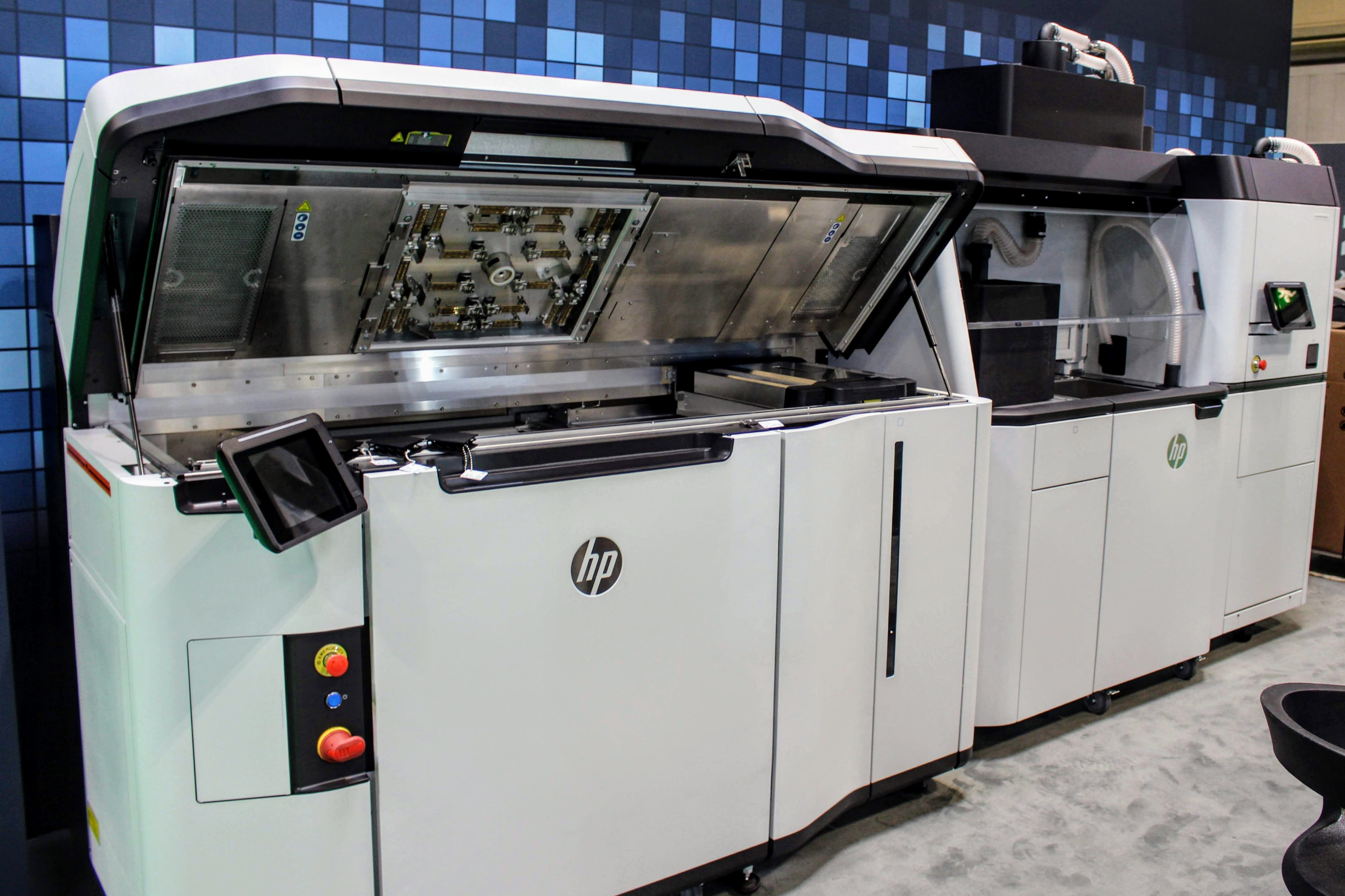The 2019 TCT Show in Birmingham is a wrap. Over the course of three days, a variety of engaging talks, panels, and presentations took place. On the final day, John Dargis, Vice President of Operations and Vice President of Research and Product Development at SmileDirectClub, a Nashville-based teledentistry company, took to the TCT Summit stage to discuss the company’s collaboration with HP.
First announced at RAPID + TCT in May 2019, the partnership between the two companies has allowed SmileDirectClub to 3D print up to 50,000 unique mouth molds per day using MultiJet Fusion (MJF) technology.
Dargis’ talk, titled “SmileDirectClub – Disrupting the Orthodontics Industry through Digital Manufacturing,” took a deep dive into the company’s 3D printing operations.

Increasing the accessibility of dental care using 3D printing
SmileDirectClub exists among a burgeoning group of dental companies utilizing 3D printing for the production of mass customized aligners. Align Technology, for example, uses 3D printing to produce the Invisalign range of clear aligners. Voodoo Clear Aligners, a dental manufacturing offshoot of New York-based 3D printing bureau Voodoo Manufacturing, is also planning to manufacture and ship over 20,000 unique orthodontic clear aligners each month in the future.
SmileDirectClub was founded in 2014, and creates personalized clear aligners in collaboration with its digital network of state-licensed dentists and orthodontists. The company’s foundation is based on increasing the accessibility and affordability of orthodontic care. “Traditional braces and aligners cost between $5,000 to $9,000 and provides frequent midday visits to the doctor’s office,” explains Dargis. “Clear aligner therapy from SmileDirectClub is more affordable, costing under $2000, or under £1500, […] without any of the inconvenience of frequent office visits.”
Customers visit the company’s “Smile Shops” to complete a scanning appointment of their teeth, after which the 3D images are used to diagnose and prescribe a set of 3D printed aligners and treatment plan through SmileDirectClub’s proprietary software. Then, its fleet of HP 3D printers are used to manufacture the mass customized mouth models, which act as the molds for clear aligners and retainers. Plastic is thermoformed over the top of the 3D printed molds to create the aligners, which are then delivered directly to the customer’s doorstep, with a lead time of three to four weeks.

3D printing as the (not-so) “secret weapon”
SmileDirectClub’s collaboration with HP was borne out of a desire to expand the reach of inexpensive, personalized clear aligners and other teeth-straightening treatments using 3D printing. The company’s manufacturing site, or “Smile Lab” houses 49 HP MJF 3D printers operating 24/7, which reportedly makes the company the largest producer of MJF 3D printed parts in the U.S. Each 3D printer produces 500 dental archers per build, and runs twice a day, totaling to an average of 50,000 parts per day. The company is providing its aligner services to the U.S., Puerto Rico, Canada, UK and Australia. SmileDirectClub has served 700,000 customers thus far, and expects to be producing 20 million parts within the next 12 months.
Although the figures are impressive according to Joseph Hogan, CEO of Align Technology, 3D Systems by comparison produces over 500,000 unique parts for Invisalign clear aligners each day. Still the leader in this field, Invisalign is currently available in over 45 countries, and treating more than 2.5 million patients. SmileDirectClub has plans for expanding its services across the globe as well, but it still has a way to go.
When discussing the company’s success, and how it was able to overcome obstacles to achieve its production levels, Dargis specifically credits its collaboration with HP dating back to 2016, and the scalability of the MJF 3D printers. “When we first bought these printers in 2016, when HP first launched the MJF technology, we were kind of working together to scale manufacturing. It came to a point where I think we were running [the 3D printers] too hard, at 24 hours a day, seven days a week. And I think the equipment maybe wasn’t designed immediately to be used for that,” he explains. “So our obstacle was scaling to the demand that we had. HP stepped up to the plate and was able to do that.”
Moving forward, Dargis says that SmileDirectClub is working with HP to help establish a software package allowing the company to manage the data of its 3D printing operations on an enterprising scale. “We have a lot of processes that provide parts that are then analysed afterwards,” he adds, “We’re working with HP right now to bring forward a software package that can analyse the data within the machine. We look forward to being able to manage the data for the enterprise level, so we can have a holistic view of all 49 3D printers. But currently, we’re doing that on an individual basis.”

Subscribe to the 3D Printing Industry newsletter for the latest news in additive manufacturing. You can also stay connected by following us on Twitter and liking us on Facebook.
Looking for a career in additive manufacturing? Visit 3D Printing Jobs for a selection of roles in the industry.
Featured image shows SmileDirectClub’s manufacturing facility in Antioch, Tennessee. Photo via HP.


